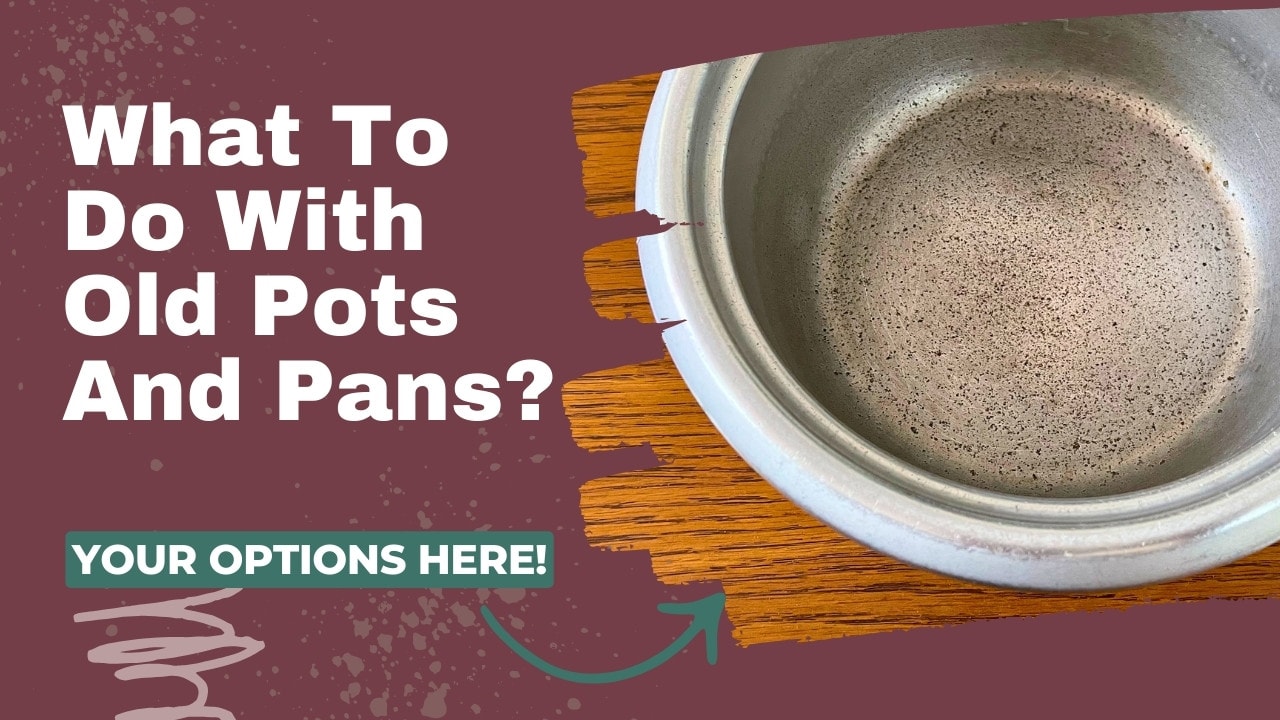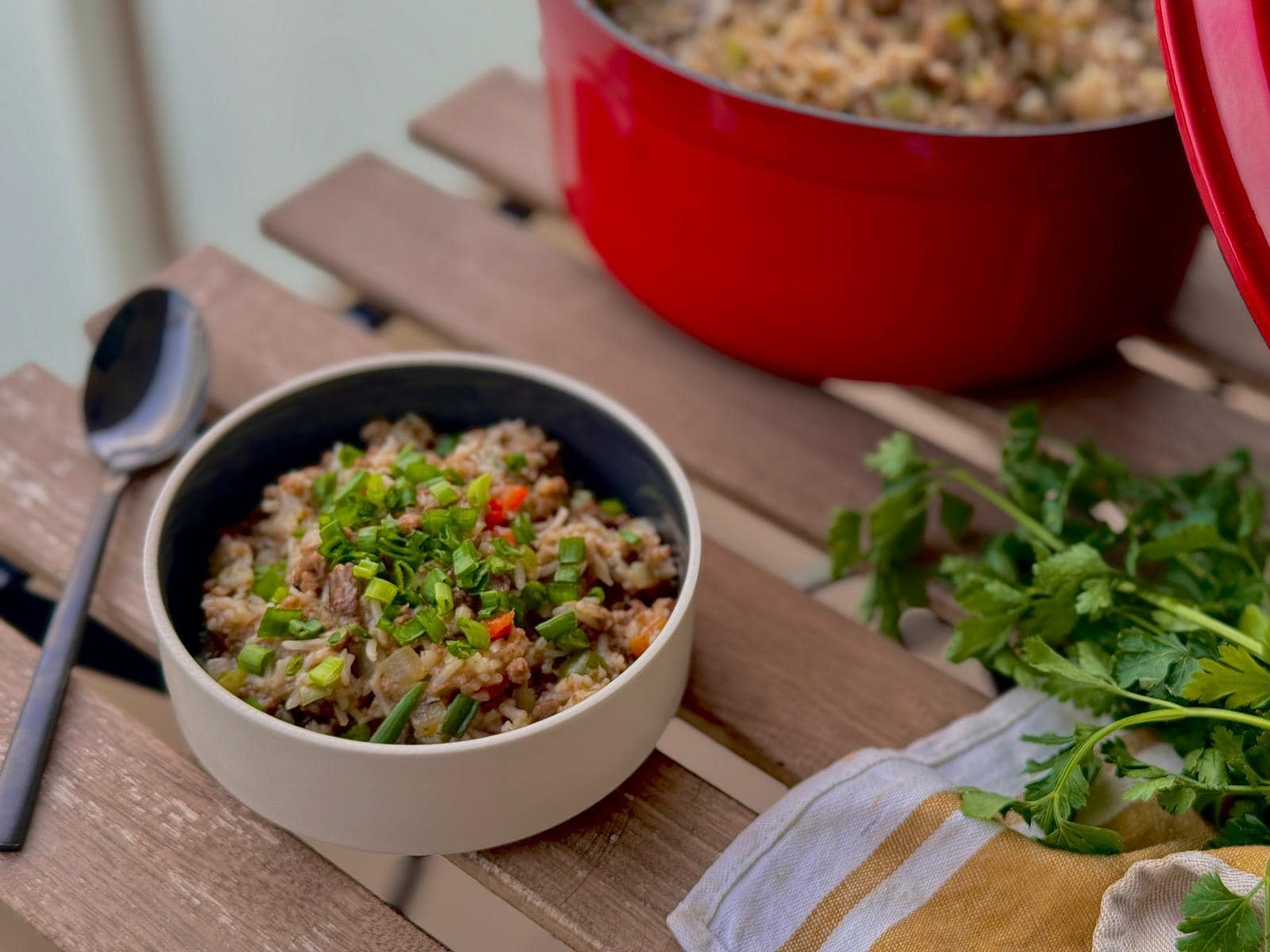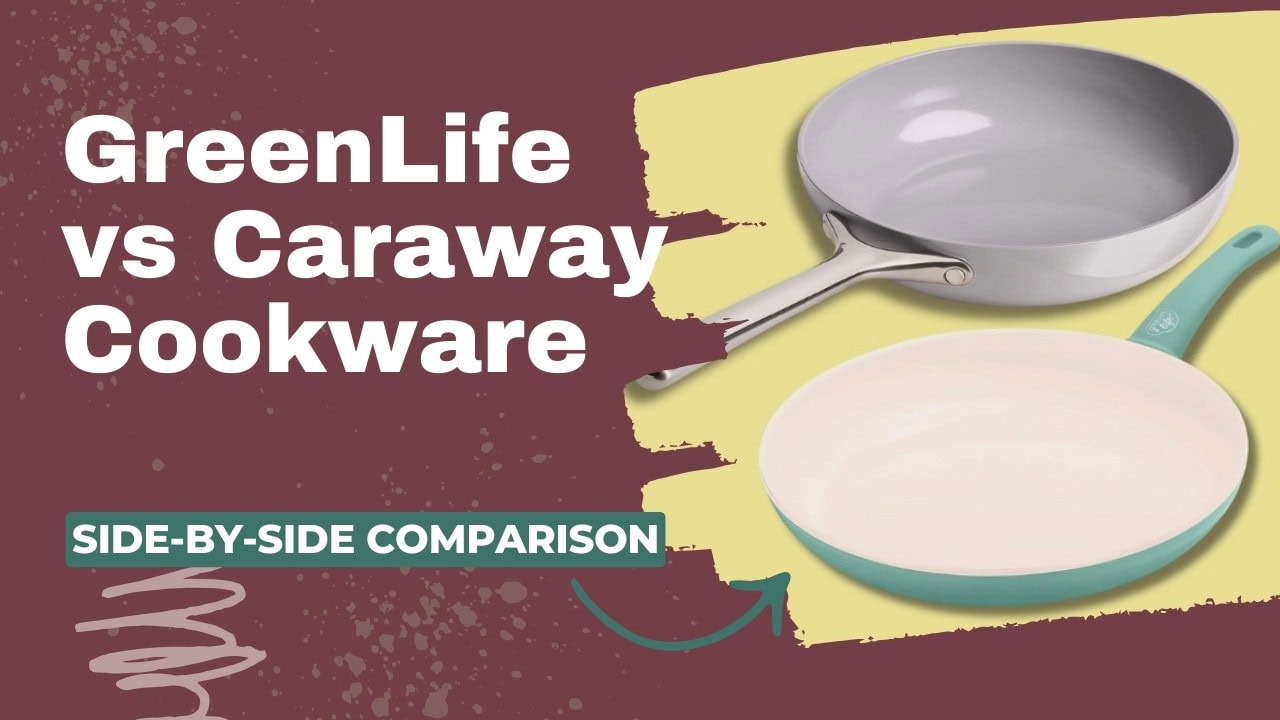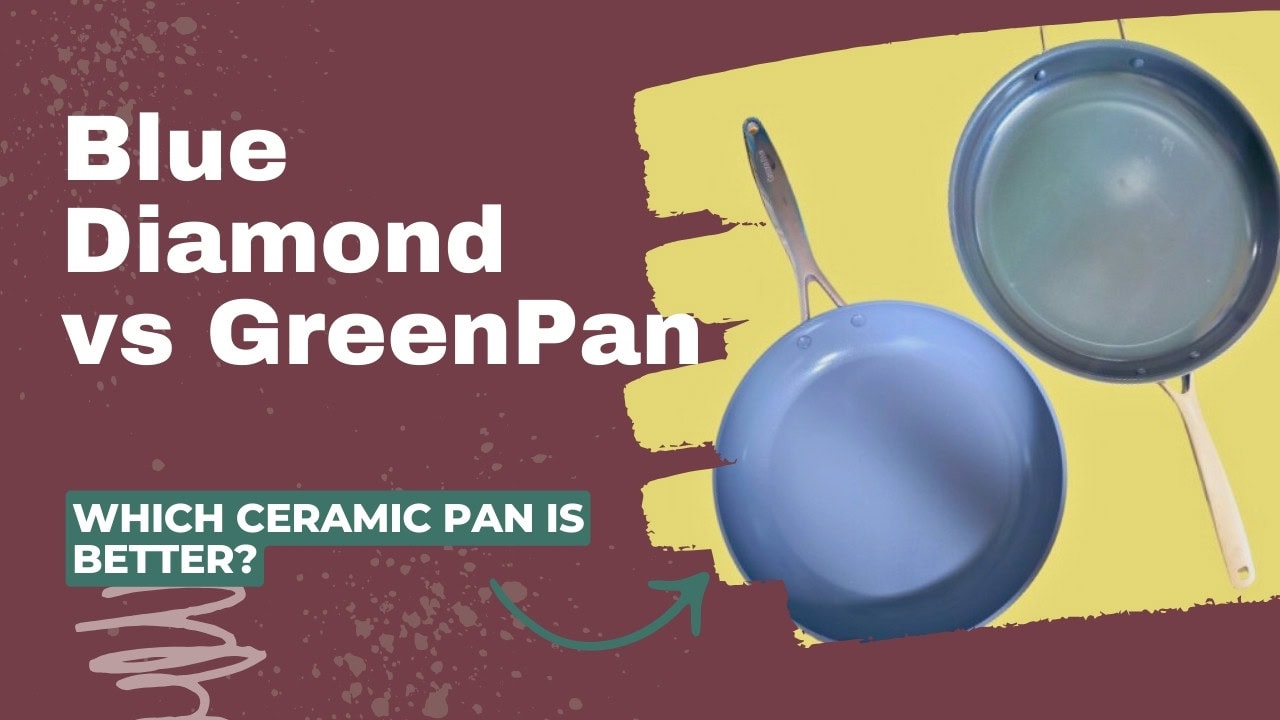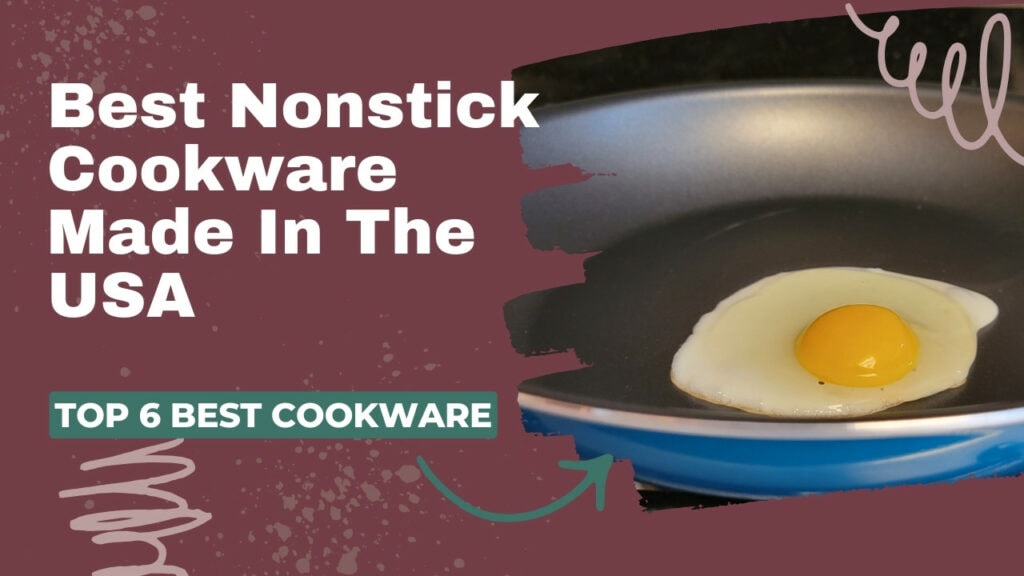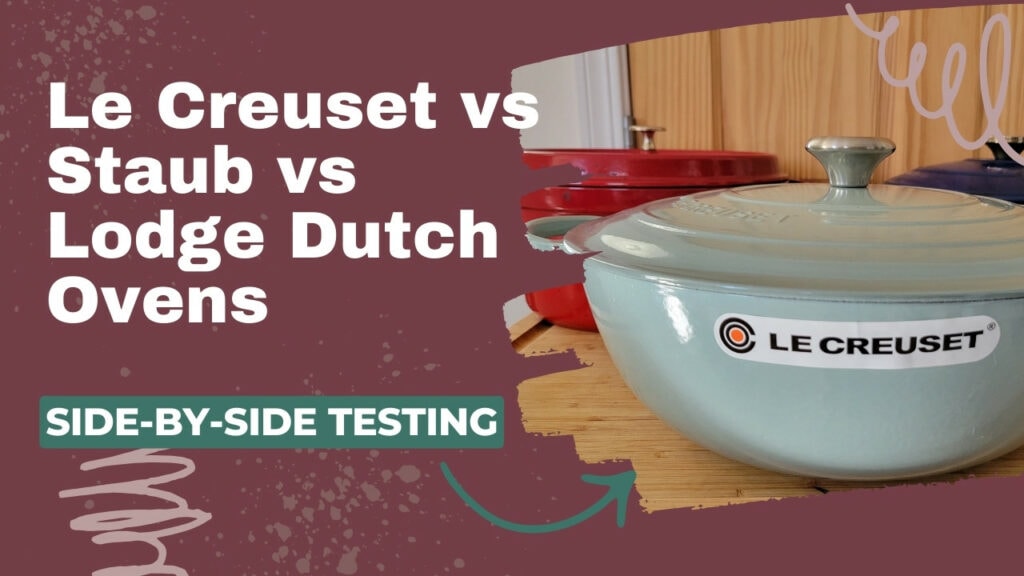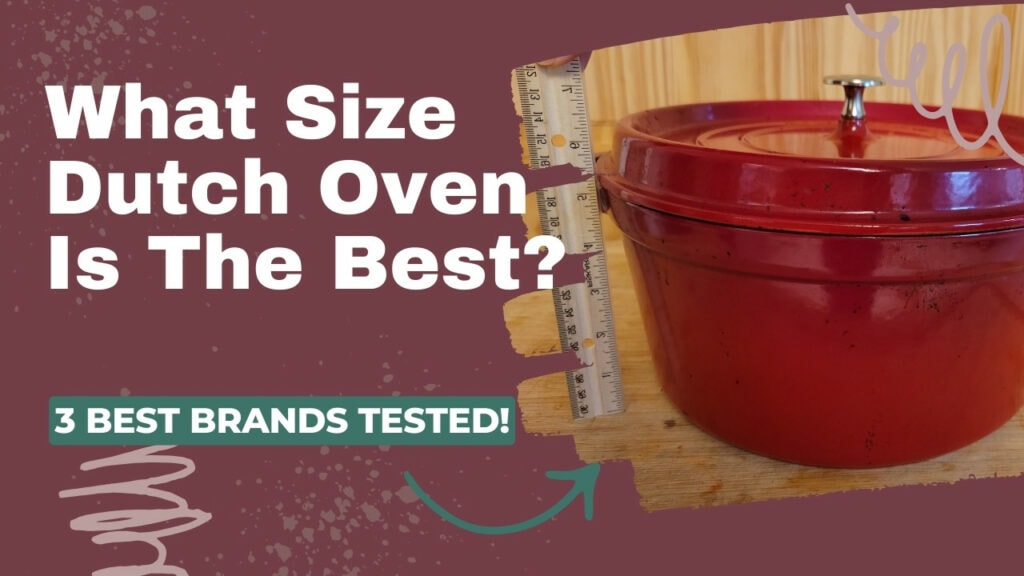They’ve served your kitchen honorably, helping you cook delicious and nutritious meals for your family. You may have even had favorites. But at some point, you’ll have to let them go. Are you still harboring worn-out cookware in your cupboards?
If so, you probably just can’t figure out what to do with old pots and pans. Not to worry! Our comprehensive guide offers everything you need to know about when to bid your cookware farewell and options for disposing or upcycling it responsibly.
What To Do with Old Pots and Pans?
You might be able to throw your old pots and pans right in the trash or the recycling bin, depending on your town’s sanitation rules. Some locales require they be dropped off at certain waste facilities or recycling centers. Another option is to sell them for scrap metal or repurpose them.
What Kinds of Cookware Can be Recycled?
Uncoated metal pots and pans made solely from copper, aluminum, cast iron, or stainless steel are often recyclable.
If your cookware has a coating, it might need to be removed before a facility can recycle it. According to experts interviewed by Martha Stewart, only a few municipalities, such as New York City, remove these layers when accepting old pots and pants.
How Do You Find Recycling Opportunities in Your Area?
The first place you’ll want to ask is your local sanitation department. If they can’t recycle your old pots and pans, they might have suggestions on who in your area can. You should also check with your cookware manufacturer to see if they offer recycling.
Cookware companies like Made In will donate or recycle your old cookware when you buy new products. Just package your old cookware in the box your new items came in and use the return shipping label they sent with your order. You can find additional information about local, manufacturer, and other available recycling programs on TerraCycle’s website.
Can Old Pots and Pans Be Replaced Under Warranty?
Some retailers like Le Creuset, Calphalon, or Farberware offer warranties that replace cookware if defective. However, these warranties are often limited and won’t replace items that are scratched, discolored, or damaged from normal wear and tear, overheating, or misuse.
You’ll have to check the manufacturer’s warranty to see if your cookware is eligible for replacement under warranty. Doing so is definitely worth it and could save you a good chunk of change if you need to buy new cookware.
How Do You Safely Dispose of Old Pots and Pans?
Sometimes the only option you’re left with is sending your old pots and pans to the landfill. A great way to avoid this is to invest in cookware known to last for decades or even a lifetime, such as stainless steel or cast iron.
Check with your local sanitation department to see if you can safely throw your old cookware in your garbage or recycling bin. Since cookware is often made from multiple types of material, your municipality may not be equipped to dispose of or recycle old pots and pans. If that’s the case, you can contact a scrap metal facility. They might be interested in taking your old cookware, and you might even make a few bucks off it.
How Do You Know When It’s Time to Replace Old Pots and Pans?
Some signs that you need to replace cookware are obvious regardless of what material they are made from. Weak or loose handles and joints on your pots and pans can lead to injuries. They can fall apart while you’re cooking, causing burns or splatters.
Gaps created by loose rivets can also cause hot liquid to seep through and reach your skin. If -these areas can not be tightened or fixed, then it’s time to get rid of them. Misshapen or warped cookware can cause food to cook unevenly, or cause the pan to spin on the stove, creating a burn hazard.
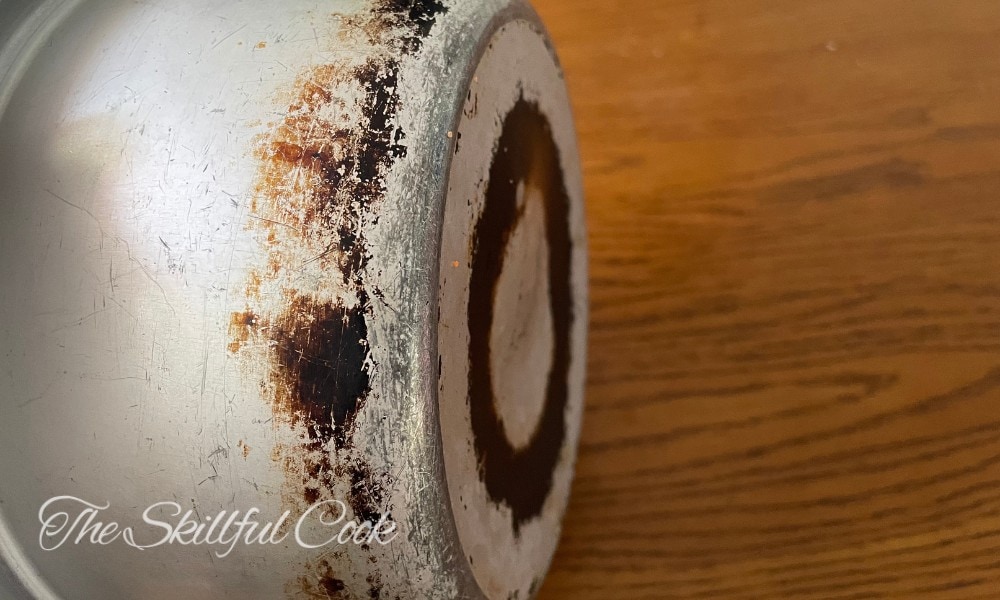
When Do You Need to Replace a Nonstick Pan?
One surefire way to tell if your nonstick pan needs replacing is when you notice food starts to stick to it. This indicates that its coating has worn down. You’ll also want to look for scratches or areas where the coating is flaking, worn off, or peeling.
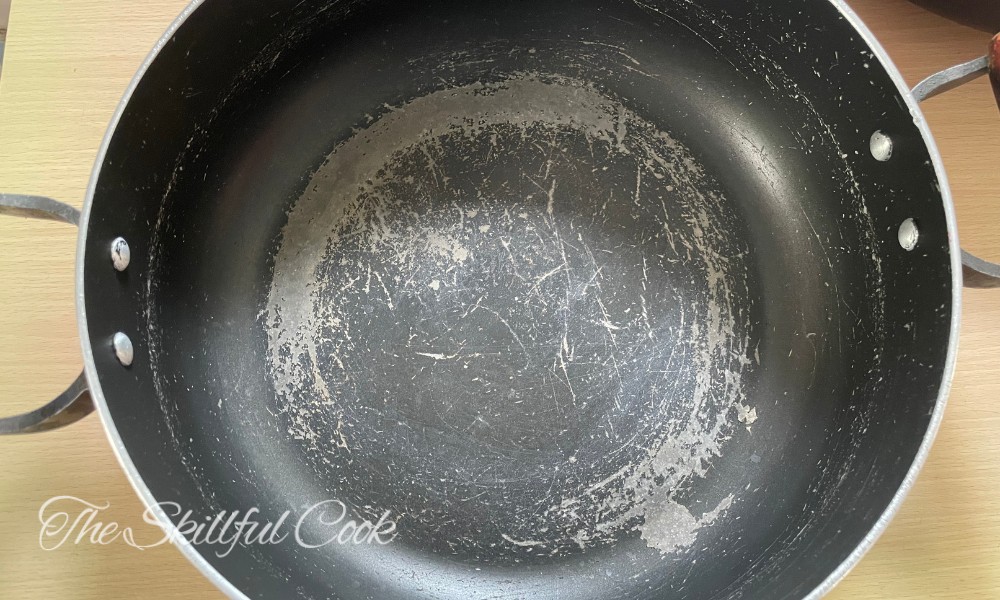
Using these old pans isn’t recommended, since loose flakes of coating could end up in your food. Ingesting these chipped pieces probably isn’t harmful, according to WebMD. They would just go through your digestive system, but that’s something most of us would like to avoid regardless.
WebMD states that pans coated in Teflon are safe, even when chipped, unless it reaches temperatures above 500°F or 260°C where it can create toxic fumes. Some experts are reconsidering the position that scratched Teflon pans are safe, however, after a 2022 study discovered that cracks in Teflon coatings create significant plastic nanoparticle release.
Healthline reports that nonstick ceramic cookware is “most likely safe,” because there isn’t as much research into it as other materials like Teflon. Nanoparticle release from scratched ceramic pans is also an emerging issue.
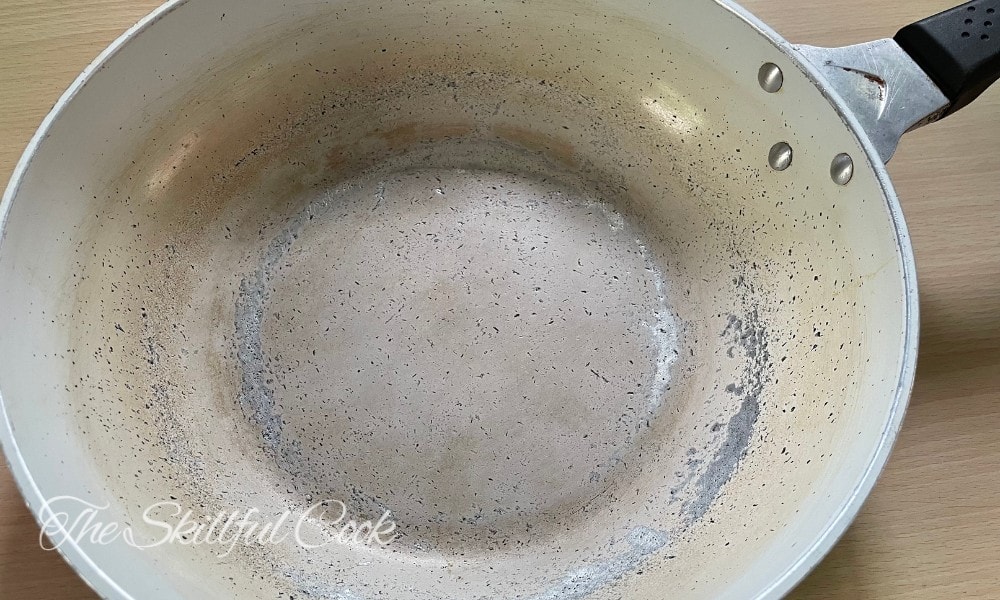
Most nonstick pans, whether ceramic or Teflon-coated, have aluminum substrates. When the pan is scratched through the coating, it can expose your food to aluminum, affecting the food’s flavor.
How Do You Know When It’s Time to Replace Enameled Cast Iron Cookware?
Enameled cast iron cookware will last many years if cared for properly. But if it begins to chip, the chipping will get worse quickly, allowing the raw iron underneath to rust. You should also replace these pieces when you notice chips or cracks forming.
How Do You Know When It’s Time to Replace Stainless Steel Pots and Pans?
You might observe corrosion and separation of layers at the edges when your stainless steel pots and pans need replacing. This can create jagged edges that can cause injury. Water or other liquid can also seep in between these layers causing rust.
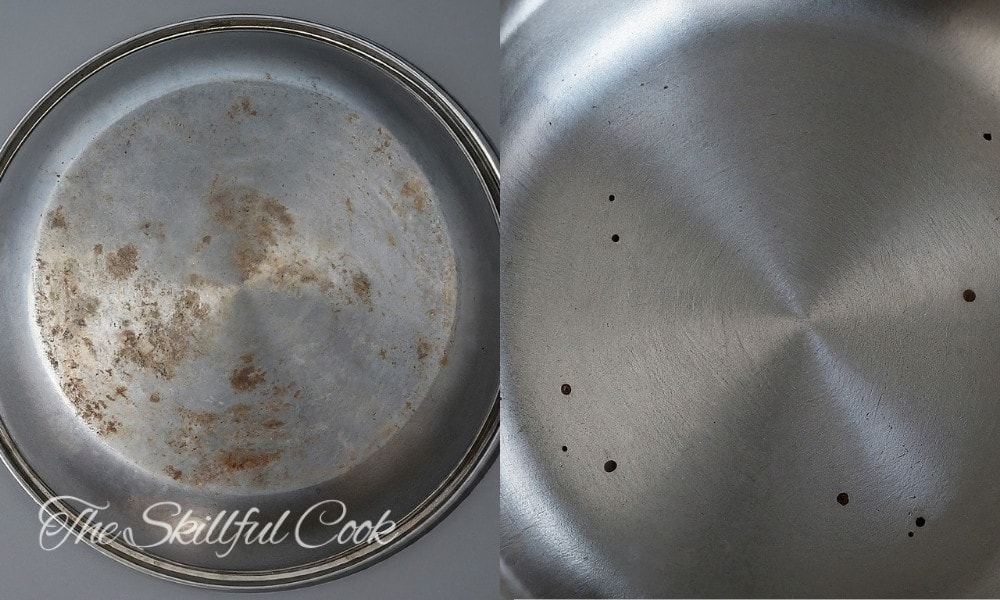
Stainless steel cookware that has deep corrosion, known as pitting, can also lead to rusting. These marks remove protective layers, leaving the inner metallic layers exposed. These inner layers of aluminum can leach into your food.
What Kinds of Cookware Can Be Repaired? Is It Worth It?
If you have a loose or broken handle, you can try tightening the screws or buying a replacement handle.
You may find some people on social media suggesting recoating a nonstick pan with a food-grade PTFE spray, but since these sprays may not be heat-safe, we recommend avoiding them.
If the cookware is badly damaged or you’re not confident in your ability to safely repair it, you can look into professional repair. Companies like Smithey do repair cast iron starting at $40. But at that price, it may only make sense if your piece has heirloom or sentimental value.
Ways to Upcycle and Reuse Old Pots and Pans
There are plenty of ways to upcycle and reuse unwanted cookware if you don’t want it to end up in a landfill and you can’t repair or recycle it.
Conclusion
We hope you found our guide informative and that it answered all your questions on when to replace, how to dispose of, how to recycle, and how to repurpose old cookware. Old pots and pans can be sent to the landfill, recycled, or sold for scrap metal.
Remember that while you can replace a handle or refurbish some cast iron or carbon steel pans, sometimes replacing it all together is your best option.
If you still have questions about what to do with old pots and pans, don’t hesitate to leave us a comment.

